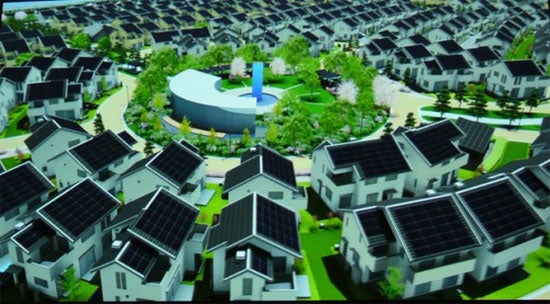Panasonic Plans to Build a ‘Sustainable Smart Town’ in Japan by 2014
Unprecedented private-sector development

Japan may still be recovering from earthquake-related woes, but that’s not stopping Panasonic and eight partner companies from pushing ahead with their own rebuilding effort that could reshape the way future cities and towns are built. Part demonstration initiative and part reclamation project, Panasonic and friends are turning the footprint of one of the company’s former factory sites into a 47-acre, 1,000-home “smart town” with energy- and eco-conscious considerations leading the development.
But the idea here isn’t to create a town stripped to the bare minimum energy usage. Rather, by building the “Fujisawa Sustainable Smart Town”–Fujisawa City in Kanagawa Prefecture being the larger urban area here–with next-gen power-generating and power-saving infrastructure from the ground up, the companies plan to show just how green a town can be when various technologies are stacked together and work in unison.
As such, Fujisawa SST won’t necessarily be home to never-before-seen, cutting-edge technologies, but to a variety of common green tech staples that, despite their availability, are expensive to retrofit into older buildings and towns.
For instance, every roof structure will be embedded with modern solar panel technology that both powers the house and banks unused energy in a home-based storage battery. Transportation infrastructure will be designed with electric vehicles in mind. Networked sensors all over town will control things like public lighting, ensuring wattage doesn’t go to waste via a local smart grid.
Basically, Fujisawa SST is envisioned as a bottom-up approach to energy efficiency–a green village built from scratch with modern green technologies rather than less-efficient older tech. Panasonic wants to use it as a template for other larger communities in Japan and elsewhere. If all goes as planned, Fujisawa SST will start receiving residents in March of 2014 and finish filling up its houses by 2018.